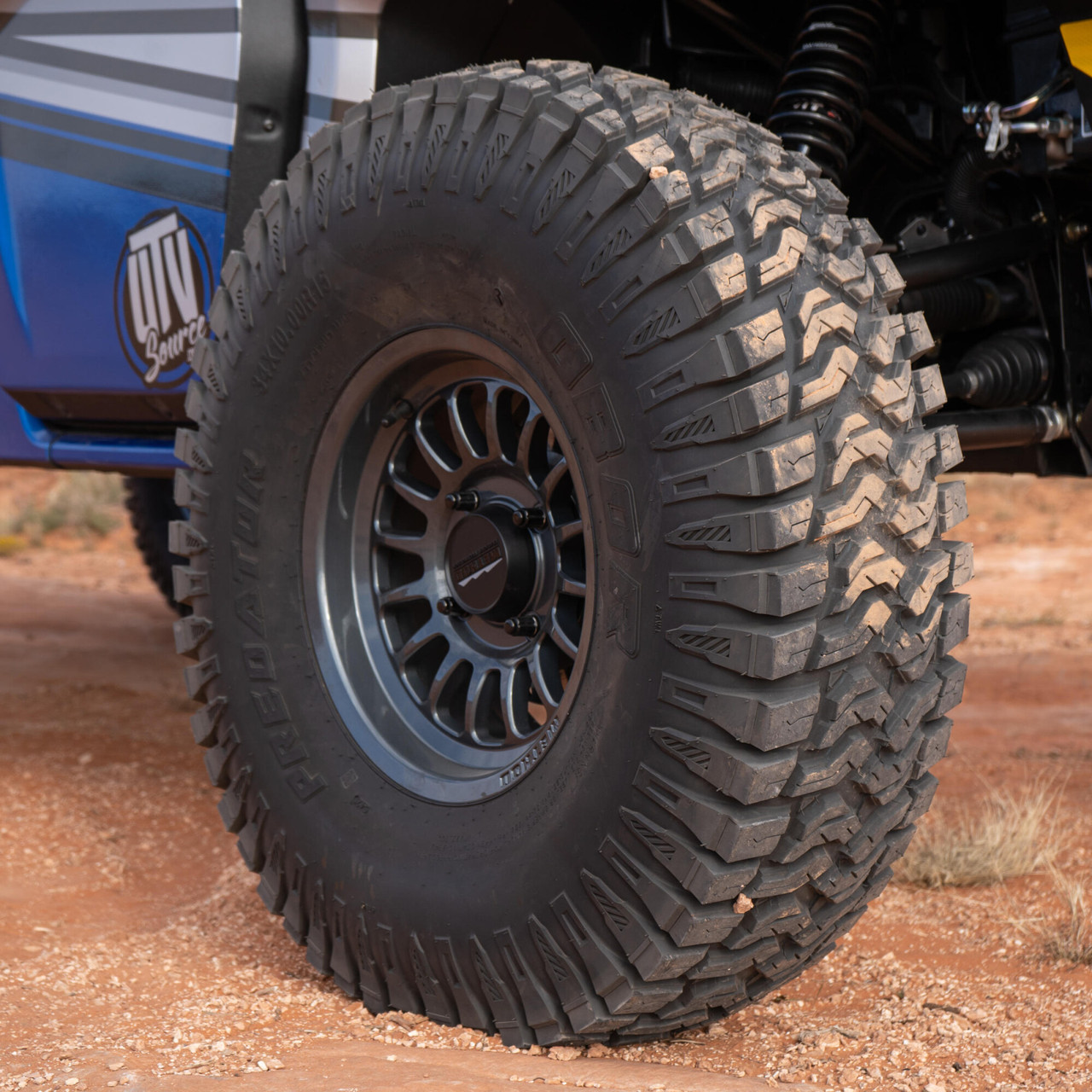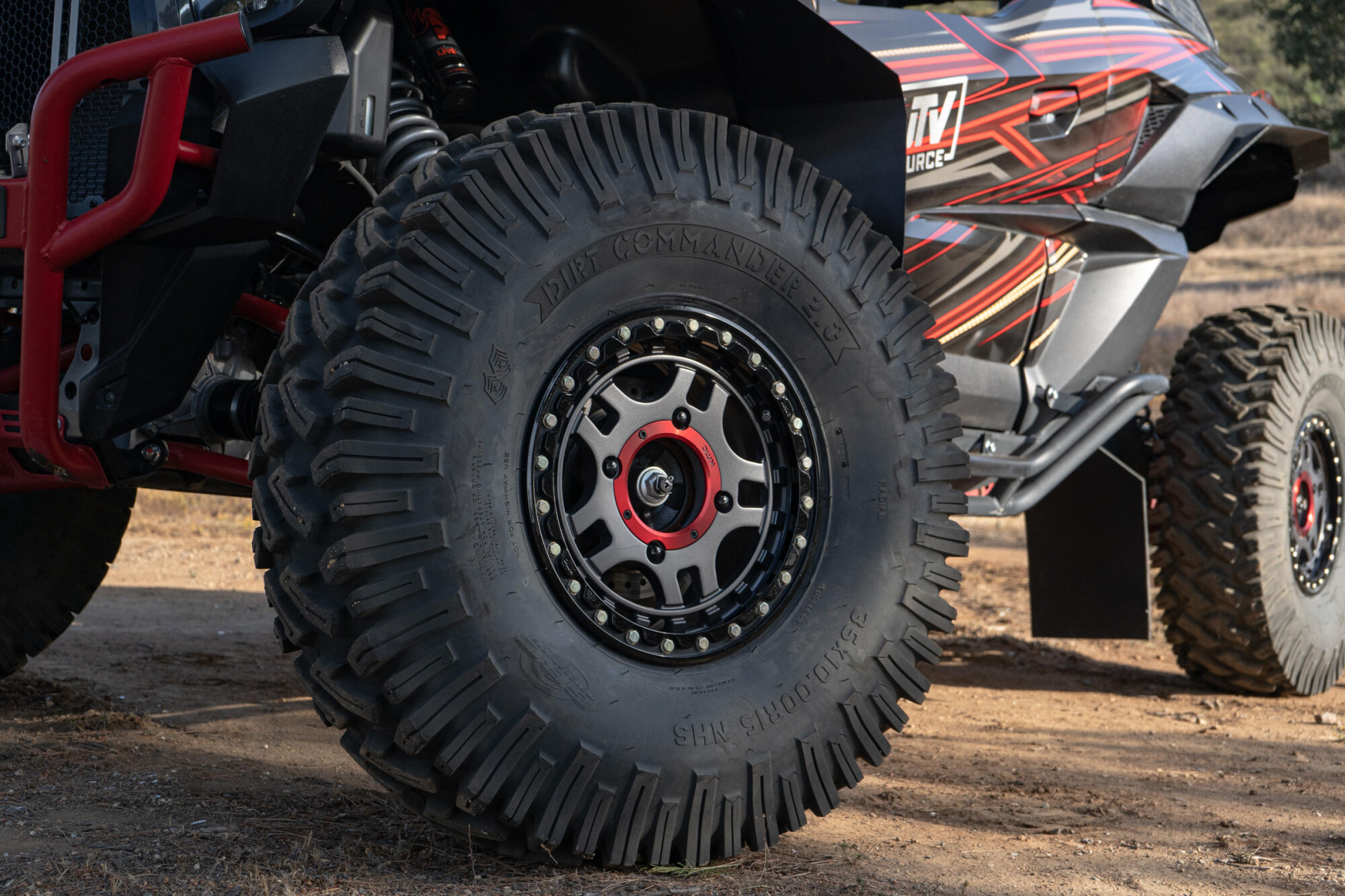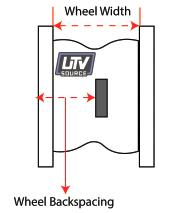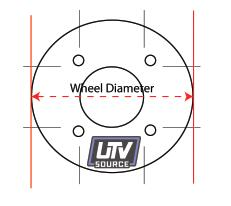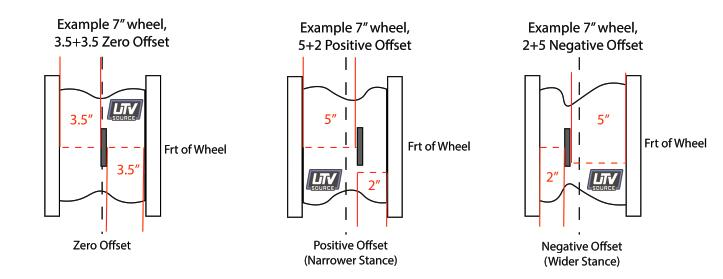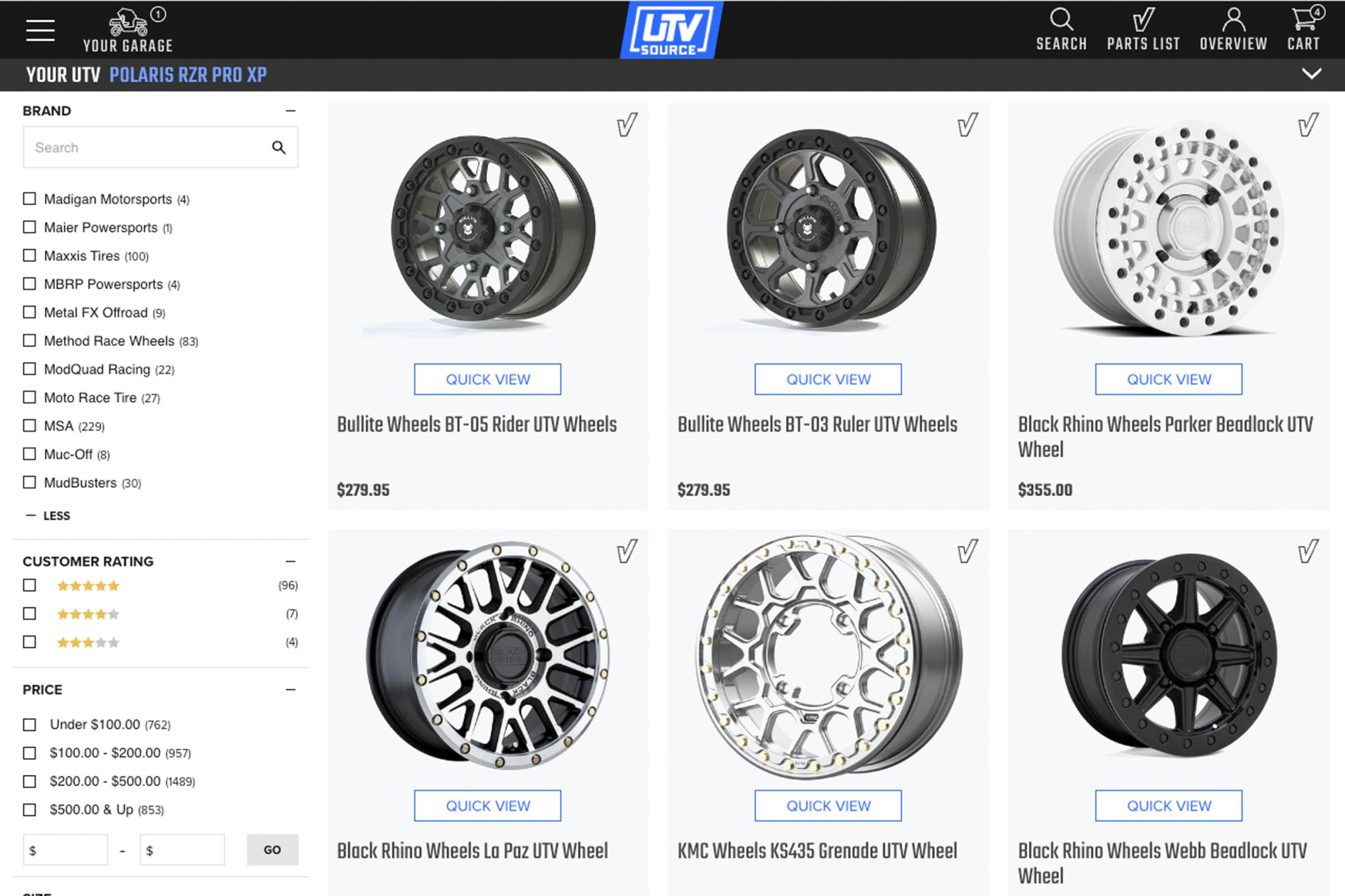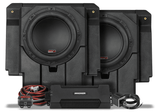Understanding UTV Wheel Measurements and Specifications | UTV Source
Bolt Patterns | Backspacing | Width | Diameter | Offsets
Your wheels are one of the most important parts on your UTV. Make sure you know what to look for when purchasing new wheels. By understanding wheel specs, you will be able to choose a set of wheels that not only fit your needs but also look great on your machine!
BOLT PATTERNS AND SPACING
Bolt pattern is defined by the number of bosses (wheel stud holes) in your wheel for mounting the wheel to the hub of the car. Most UTV’s utilize a 4-bolt pattern, however 5-bolt patterns are an emerging trend as vehicle performance increases. It’s easy to recognize -4 and -5 bolt patterns by simply counting the number of wheel studs on your vehicle. However, the spacing may vary depending on the manufacturer.
Most bolt patterns are stated in millimeters and there are 25.4 millimeters in one-inch. So If you measure with a tape measure in inches, you can convert to metric millimeters by multiplying (inches x 25.4), or you can easily find an online converter with a quick Google search.
How to measure bolt spacing
For a 4-bolt wheel: remove your stock wheel and measure diagonally opposing stud bosses (center-to-center). Example spacings: 4/110mm; 4/115mm; 4/137mm; 4/156mm
For a 5-bolt wheel: remove your stock wheel and measure diagonally opposing stud bosses (from the back of one boss-to-the-center of the opposing boss). Example spacings: 5/114.3
For a 3-bolt (ATV) wheel: remove your stock wheel. This one requires you to create a virtual circle (diameter) through the center of all three bosses. The bolt spacing is the distance across the middle of the diameter.
BACKSPACING
Backspacing is the distance between the hub mounting surface and the back lip of the wheel. You can easily measure this by laying your wheel flat with the front of the wheel down. Lay a flat straight edge across the back of the wheel. With a tape measure, take a measurement from the mounting hub of the wheel to the straight edge.
WHEEL WIDTH
Width is measured across the wheel. Place your wheel standing up as if it were on your car. Measure the distance across inside-to-inside of the bead (inside lip of the wheel).
WHEEL DIAMETER
This is the overall diameter of the wheel. Simply measure across the face of your wheel from outside-to-outside of the wheel edge.
WHEEL OFFSET
Wheel offset is a measurement of the wheel hub (mounting surface) in relation to the centerline of the wheel and the inside of the bead. This is important due to the relationship of wheel/tire clearance on the backside of the wheel to ensure good clearance of shock and suspension components. It also indicates how far the wheel/tire will protrude from the fenders/flares when viewing from the frontside of the wheel.
Zero Offset - this means the mounting hub surface of the wheel is exactly in the center of the wheel, so you have the same distance on the back of the wheel and front of the wheel.
Positive Offset - indicated by a (+) measurement, a positive offset moves the mounting hub surface of the wheel forward of the wheel centerline. This tends to tuck the wheel in further on the vehicle for a narrower stance. (Note: the illustrations show a 5+2 offset - another popular positive offset size we see a lot is 4+3)
Negative Offset - is indicated by a (-) value, a negative offset moves the mounting hub surface of the wheel back of the wheel centerline towards the brakes/suspension. This will allow for more tire clearance on the backside of the wheel and position the front of the wheel out a further distance on the vehicle for a wider stance.
Now that we’ve touched off on bolt patterns, bolt spacing, wheel diameter, backspacing, wheel width, and offsets you should have a better understanding of what these measurements all mean. Although this will serve as a good guide on your next set of wheels and tires we always recommend verifying your fitment with the wheel manufacturer.
We've created a downloadable wheel and tire guide as well. Click link, print (to size) and you can use a reference to find out your UTV's bolt pattern and/under the offset needed.
Download the wheel/tire guide here
Be sure to check out UTV Source wheel offerings here: UTVSource-wheels


